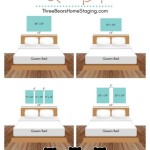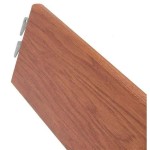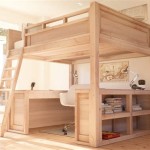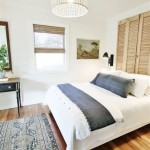DIY Twin Over Queen Bunk Beds: A Comprehensive Guide
Building twin over queen bunk beds presents a space-saving solution, particularly beneficial for families or individuals with limited space. This project requires careful planning and execution, demanding moderate carpentry skills and adherence to safety guidelines. This comprehensive guide outlines the necessary steps and considerations involved in constructing a robust and aesthetically pleasing twin over queen bunk bed.
Planning and Design
Before commencing construction, meticulous planning is essential. Key aspects to consider include:
- Measurements: Accurate measurements of the available space dictate the bed's dimensions, ensuring a proper fit within the room. Consider mattress thickness and allow sufficient headroom for both the upper and lower bunks.
- Materials: Choose high-quality lumber, preferably kiln-dried, to minimize warping and ensure structural integrity. Common choices include pine, fir, or cedar.
- Design: Select a design that complements the room's aesthetics. Consider incorporating features like built-in storage or a ladder with integrated handrails.
- Safety: Prioritize safety by incorporating guardrails on the upper bunk, ensuring they are sufficiently high and securely attached. Select a sturdy ladder design and consider adding a safety rail for accessing the upper bunk.
Gathering Materials and Tools
Acquiring the necessary materials and tools beforehand streamlines the construction process. Essential items include:
- Lumber: Purchase the appropriate quantity and dimensions of lumber based on the chosen design. Refer to detailed plans for specific measurements.
- Hardware: Acquire screws, bolts, nuts, washers, and wood glue specifically designed for structural applications.
- Tools: Assemble the necessary tools, including a saw (circular saw or miter saw), drill, measuring tape, level, safety glasses, and ear protection.
- Finishing Supplies: Select desired paint or stain, sandpaper, and brushes or rollers for the final finishing touches.
Constructing the Frame
Building a robust frame forms the foundation of the bunk bed. This stage involves:
- Cutting the Lumber: Carefully cut the lumber according to the design plans, ensuring precise measurements for a square and stable frame.
- Assembling the Posts: Construct the four corner posts for both the upper and lower bunks, utilizing strong joinery techniques like mortise and tenon or pocket screws.
- Connecting the Rails: Attach the side and end rails securely to the posts, forming the rectangular frame for each bunk.
- Adding Support Beams: Incorporate center support beams for both the twin and queen frames to prevent sagging and enhance stability, especially for the larger queen mattress.
Building the Upper Bunk
The upper bunk requires specific attention to safety and stability. Key considerations include:
- Securing the Frame: Attach the upper bunk frame securely to the lower bunk posts, ensuring robust connections and adequate weight-bearing capacity.
- Installing Guardrails: Install sturdy guardrails on all open sides of the upper bunk, extending sufficiently high to prevent falls. Ensure the spacing between slats adheres to safety standards.
Building the Ladder and Access
Safe and easy access to the upper bunk is paramount. Recommendations include:
- Ladder Construction: Build a sturdy ladder with appropriately spaced rungs, ensuring secure attachment to the bunk bed frame. Consider angled or vertical ladder designs.
- Handrails: Incorporate handrails for added safety when ascending and descending the ladder, particularly for younger users.
Installing the Slats
Supporting the mattresses requires appropriate slat placement:
- Slat Placement: Install slats across both the upper and lower bunk frames, providing adequate support for the mattresses and ensuring even weight distribution.
- Spacing: Maintain proper spacing between slats to allow for ventilation while providing adequate support. Refer to mattress manufacturer guidelines for recommended spacing.
Finishing and Safety Check
The final steps involve applying finishing touches and confirming overall safety:
- Sanding: Sand all surfaces smooth to eliminate splinters and create a finished look.
- Painting or Staining: Apply paint or stain according to product instructions, enhancing the aesthetic appeal and protecting the wood.
- Safety Inspection: Conduct a thorough safety inspection, ensuring all connections are secure, guardrails are firmly attached, and the ladder is stable. Test the bed's weight-bearing capacity before use.
Building twin over queen bunk beds presents a rewarding DIY project, providing a functional and space-saving sleeping arrangement. Careful adherence to safety guidelines and thorough planning are crucial for a successful and safe outcome. Consulting detailed building plans and seeking professional advice when needed further enhances the project's success.

Modular Bunk Bed Setup Woodworking Blog S Plans How To Diy Cool Beds

17 Easy Steps For A Diy Built In Bunk Bed Start At Home Decor

Diy Built In Bunk Beds Lauren Koster Creative

Queen Builtin Bunks Reveal Honey Built Home

17 Easy Steps For A Diy Built In Bunk Bed Start At Home Decor

Twin Over Full Bunk Bed Queen Beds Plans Loft

How To Build A Built In Bunk Bed Plank And Pillow

Farmhouse Style Twin Over Full Bunk Bed Plans Her Tool Belt

Diy Built In Bunk Beds With Stairs Old Salt Farm

My Diy Queen Over Bunk Beds Made The For Less Than 120 Bedroom House Plans
Related Posts







